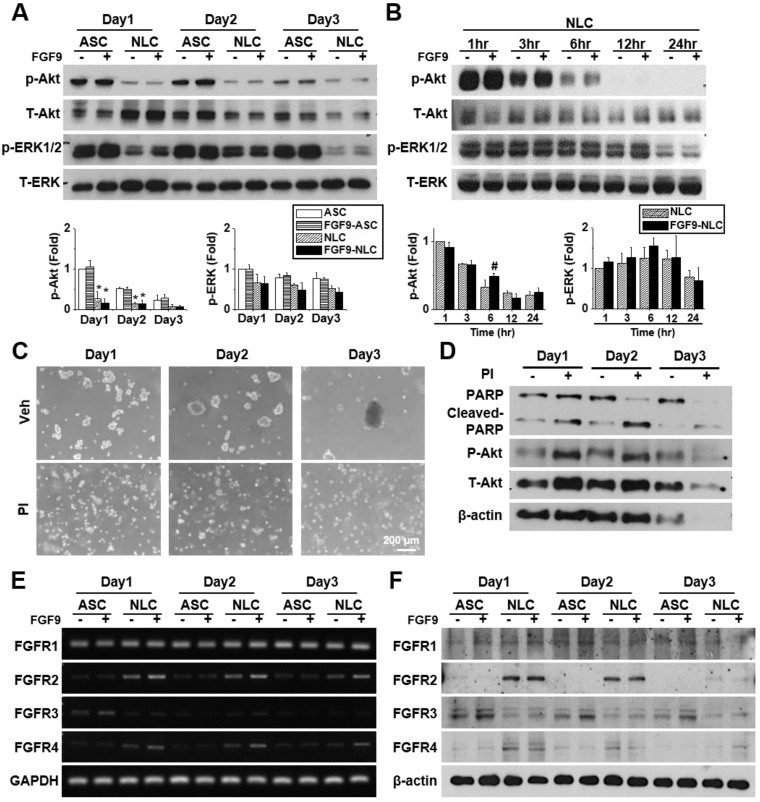Figure 3.
FGF9 treatment activates FGFR2 and Akt signaling during the induction of NLCs. (A) ASCs and NLCs were treated with or without FGF9 (50ng/ml) at the indicated time points to investigate the phosphorylation of Akt and ERK downstream signaling. The dephosphorylation of Akt and ERK were observed from the first day of NLC induction. (B) Although Akt and ERK were continuously dephosphorylated within 24hr of NLCs induction, the FGF9 treatment induced a transient activation of Akt at 6 hr. (C) During the induction of NLCs, the administration of phosphatase inhibitor (PI) abolished sphere formation. (D) Blocking Akt dephosphorylation and preventing sphere formation by using PI treatment increased PARP cleavage (Cleaved-PARP) for cell death. Although FGF9 treatment slightly induced the gene expression of FGFR2 and FGFR4 (E), the protein expression level remained unchanged regardless of FGF9 treatment (F). p-Akt, phosphorylated Akt; T-Akt, total Akt; p-ERK, phosphorylated ERK; T-ERK, total ERK. Scale bar in phase image: 200 μm. Data represent the mean ± SD of three independent biological repeats. For A, *p < 0.05 compared to undifferentiated ASCs. For B, #p < 0.05 compared to vehicle-treated NLCs.

